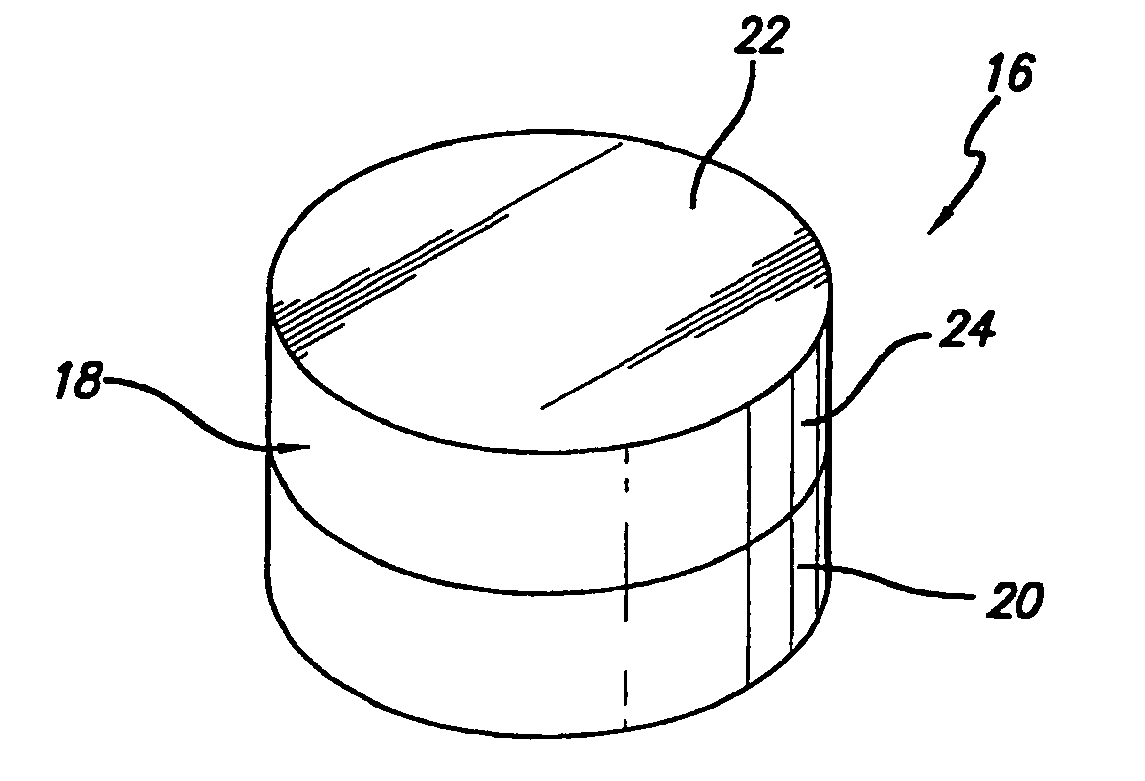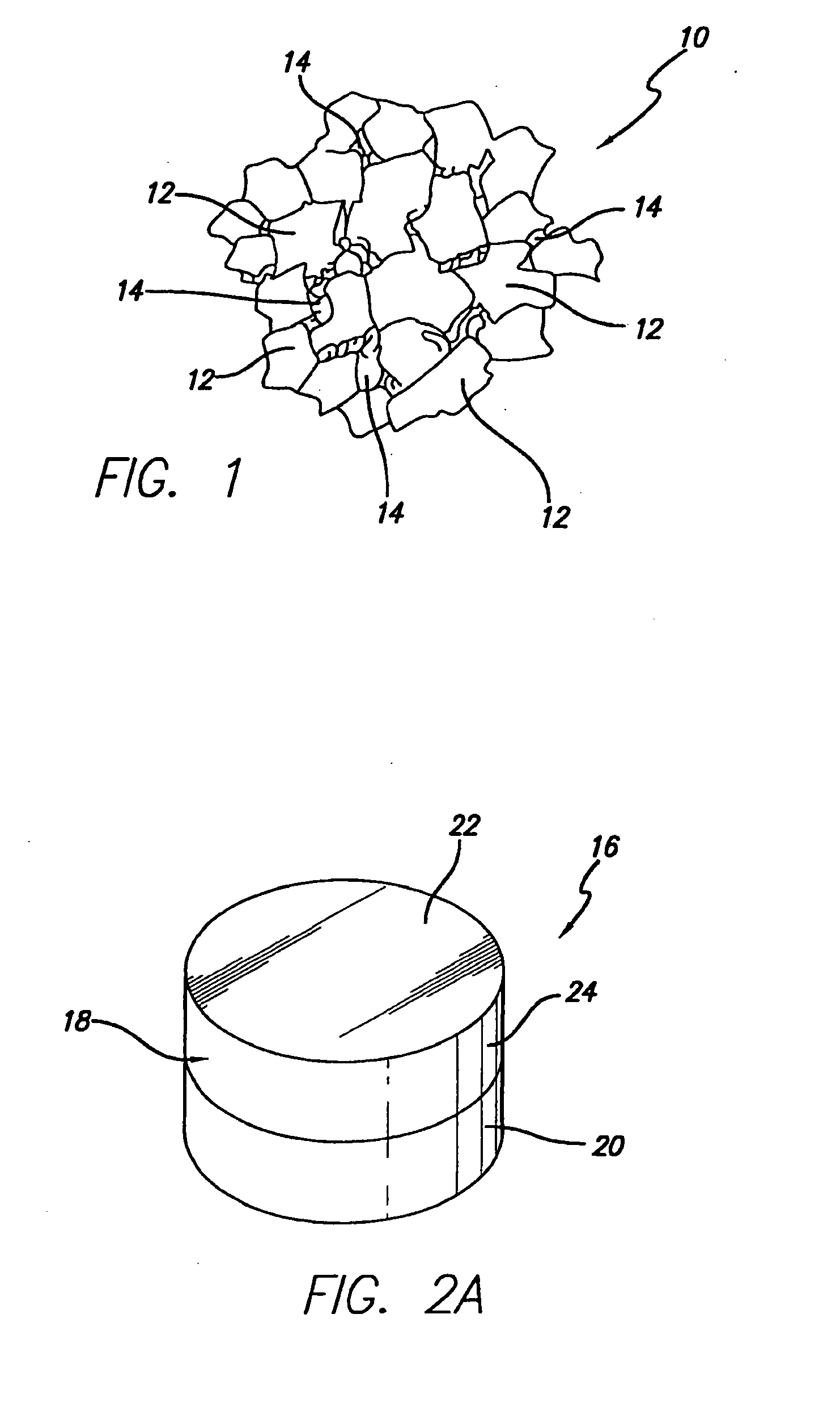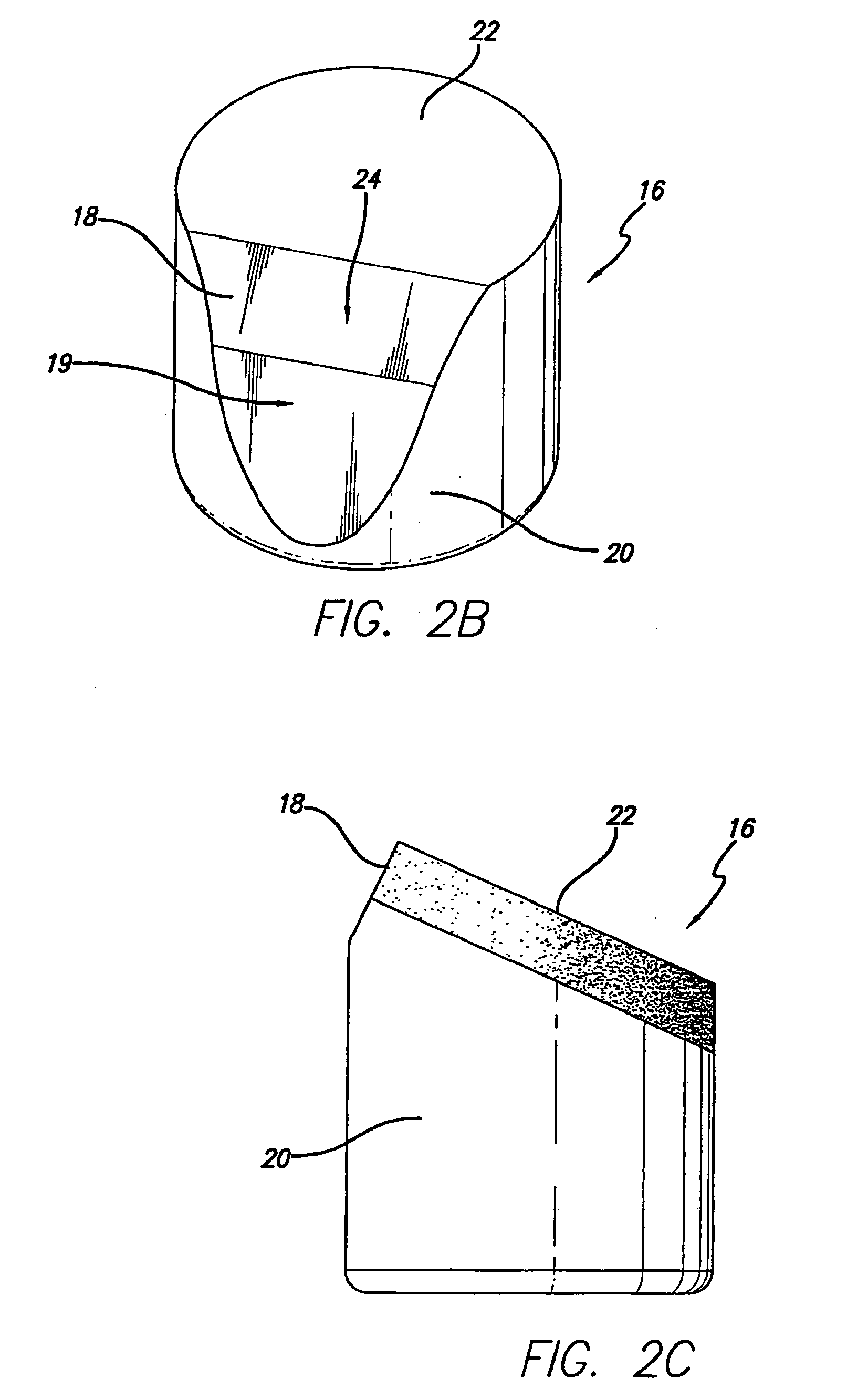Polycrystalline ultra-hard material with microstructure substantially free of catalyst material eruptions
- Summary
- Abstract
- Description
- Claims
- Application Information
AI Technical Summary
Benefits of technology
Problems solved by technology
Method used
Image
Examples
example
Polycrystalline Ultra-Hard Material Compact
[0072] Synthetic diamond powder having an average grain size of approximately 2 to 50 micrometers was mixed together for a period of approximately 2 to 6 hours by ball milling. The resulting mixture was cleaned by processing in a hydrogen reduction furnace cycle. The mixture was loaded into a refractory metal container. A WC—Co substrate was positioned adjacent a surface of the diamond powder volume. The container was surrounded by pressed salt (NaCl) and this arrangement was placed within a graphite heating element. This graphite heating element containing the pressed salt and the diamond powder and substrate encapsulated in the refractory container was then loaded in a vessel made of a high pressure / high temperature self-sealing powdered ceramic material formed by cold pressing into a suitable shape.
[0073] The self-sealing powdered ceramic vessel was placed in a hydraulic press having one or more rams that press anvils into a central ca...
PUM
| Property | Measurement | Unit |
|---|---|---|
| Length | aaaaa | aaaaa |
| Fraction | aaaaa | aaaaa |
| Fraction | aaaaa | aaaaa |
Abstract
Description
Claims
Application Information
 Login to View More
Login to View More - R&D
- Intellectual Property
- Life Sciences
- Materials
- Tech Scout
- Unparalleled Data Quality
- Higher Quality Content
- 60% Fewer Hallucinations
Browse by: Latest US Patents, China's latest patents, Technical Efficacy Thesaurus, Application Domain, Technology Topic, Popular Technical Reports.
© 2025 PatSnap. All rights reserved.Legal|Privacy policy|Modern Slavery Act Transparency Statement|Sitemap|About US| Contact US: help@patsnap.com



